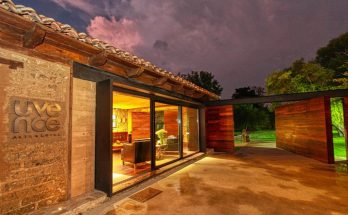Guanajuato City is the Capital of the State of Guanajuato and is one of the most important historical and cultural colonial cities of Mexico.
Table of Contents

The whimsical trace of its streets, its peaceful squares and gardens and the beauty of its houses and buildings give to Guanajuato city an evocative and romantic touch.
Guanajuato is considered by many the most beautiful colonial city in the Americas, owes its fame and fortune to rich veins of silver and gold discovered by the Spanish many years ago. During prehispanic times, the region was originally inhabited by the nomadic Chichimeca tribe.
The first incursions by the Spanish occurred in 1541 and the territory was formally founded in 1570. By 1741 King Phillip V of Spain had officially designated Guanajuato a city.
During the tenure of President Benito Juarez, the city was provisional capital of the country. In 1903 President General Porfirio Diaz, inaugurated the Legislative Palace, the Juarez Theater, The Peace Monument, Hidalgo Monument and the Esperanza Reservoir.
In 1945 the state college became the University of Guanajuato, Mexico’s foremost public university. In 1953, University theater groups began to perform Cervantes plays which, in 1972 led to the creation of Latin America’s premier arts festival, the International Cervantes Festival.
Guanajuato Museums
Quijote Iconographic Museum
Opened in 1987, this unique museum exhibits works dedicated to the famous Spanish fictional character “Don Quixote”. These works were donated by Mr. Eulalio Ferrer. Among the masterpieces on display are works by Dali, Picasso, Rafael and Pedro Coronel. Open Tuesday to Saturday 10:00am to 6:00pm and Sunday 10:00am to 3:00pm.

Alfredo Duges Museum
This natural history museum was opened in 1941 and is situated in the central building of the University of Guanajuato. It contains a collection of reptiles, batrachians, fish, mammalians, insects, birds, plants, minerals, bones and fossils. Open Monday to Friday 10:00am to 6:00pm.
Diego Rivera Museum
The internationally renowned muralist Diego Rivera was born in this 18th Century colonial house. The museum houses the original furniture and items belonging to the artist and his family. A collection of Diego Rivera’s works are also on display. Open Tuesday to Saturday 10:00am to 6:30pm and Sunday 10:00am to 2:30pm.
Alhondiga de Granaditas Museum
This granary was the scene of one of Mexico’s most courageous acts of war by Independence hero “El Pipila”. Now an impressive museum Movement. Open Tuesday to Saturday 10:00am to 1:30pm and 4:00pm to 5:30pm.
Mineralogy Museum
Situated in the School of Mining at the University of Guanajuato, this museum houses one of the finest mineralogy collections in the Americas. Open Monday to Friday 10:00am to 6:00pm.

Ex Hacienda San Gabriel de Barrer
This museum exhibits furniture and painting from the 18th Century. The beautiful hacienda gardens representing 17 countries are definitely worth a visit. Open Monday to Sunday 9:00am to 6:30pm.
Mummy Museum
This museum is certainly one of kind. On display are 119 mummified bodies which have been preserved in perfect condition as a result of the high mineral content of the soil. Open Monday to Sunday 9:00am to 6:00pm.

Olga Acosta – Jose Chavez Morado Art Museum
Originally the home of these two internationally renowned artist, it now houses a large collection of their paintings and works of art. Open Thursday to Sunday 9:30am to 4:00pm.
Guanajuato Attractions
Union Garden
A beautiful triangular shaped park located in the canter of the city, it is the most popular gathering point in Guanajuato. The state band performs lively music here Tuesdays, Thursdays and Sunday.
Juarez Theater
Construction of this theater began in 1873 and was opened in 1903 by President Porfirio Diaz. One of the most beautiful theaters in Mexico, it exhibits a variety of architectural styles. The facade is Doric-Roman, the lobby is French and the interior is Moorish in style.

San Diego Church
This Church dates back to the 18th Century and its facade is baroque in design.
Peace Plaza
This semi-triangular plaza is surrounded by some of the most beautiful buildings in the city. The monument in the center of the plaza is bronze with a marble and quarry stone base which was erected to commemorate the end of the War of Independence.
Basilica of Our Lady of Guanajuato
Constructed between 1671 and 1696, the facade is baroque in style and the interior contains a statue of the Patron Virgin of the city which was a gift from King Charles I of Spain and his son Pillip II.

Legislative Palace
Built in the 19th Century an inaugurated in 1903 by President General Porfirio Diaz. The facade is neoclassic in design and the interior has art nouveau influences.
Compañia Church
Built between 1747 and 1765, the facade of the church is churrigueresque in design. One may admire many restored paintings in the old sacristy.
Count Raul’s Mansion
Considered one of the purest examples of neoclassic architecture in Mexico, this mansion was designed by famed architect Francisco Eduardo Tresguerras.
University of Guanajuato
In 1732 was originally used as a hospice. This beautiful neoclassic building of green quarry stone is characterized by its impressive outdoor staircase. The University is the center of academic pursuits and also promotes artistic and cultural activities.
Hidalgo Market
Built at the beginning of 20th century, this market was inaugurated in 1910 by President General Porfirio Diaz. The facade of the building is made of pink quarry stone. Here one may purchase original handicrafts and traditional local candies.

San Roque Church and Plaza
The church dates back to 1726 and its facade is baroque in style . Since 1953 theater groups have been enacting Cervantes plays in the Plaza outside the church. These plays eventually led to the creation of the international Cervantes Festival.
Kiss Alley
Famous for its legend of eternal love, this romantic spot is formed by two balconies just 23 inches apart.
San Fernando Plaza
A typical Guanajuato plaza surrounded by beautiful colonial houses. It is also used for University cultural events.
Celebrations and Festivals
Friday before Good Friday
Altars are erected one week before Good Friday in honor of Virgen de los Dolores, (our Lady of Sorrows) patron of Guanajuato miners. The traditional Parade of Flowers is held in the Union Garden.
Festival of San Juan and the pot Dam
This artistic and cultural festival is held in the latter half of June at the Pot Reservoir and Dam.
Pot Dam Opening Ceremony
This popular fiesta is held the first Monday in July. Originally the dam was opened to clean the river which runs through the city. Now, standing Guanajuato tradition.
Day of the Cave
This traditional Mexican country fair is held on July 31 and is also known as St. Ignatius de Loyola Day. Local residents have a picnic and enjoy the view from the Picachos Hills just outside of city.
Day of the Siege on the Alhondiga de Granaditas
On the 28th of September a civic and military parade is held to commemorate the siege on the Alhondiga de Granaditas in which “El Pipila” burned down the door of the building beginning the overthrow of the Spanish.
International Cervantes Festival
Held each October, this festival is one of the most famous in Latin America. Year after year more than 35 countries participate in this cultural event with activities such as dance, theater, opera, music and film.
The Illuminations
Traditional religious celebrations held in different areas of the city each November. Typical Mexican food is served during these traditional celebrations.
Sugar Figure Fair
Held the last week of October and the first three days of November. Miniature sugar figures are made to commemorate All Soul’s Day (November 2).
Conclusion
The city of Guanajuato has to be one of the cities in Mexico that you have to know, where magic is lived at all times and so that you do not miss absolutely nothing, we invite you to continue reading: Dolores de Hidalgo, Celaya and Irapuato Mexico.




